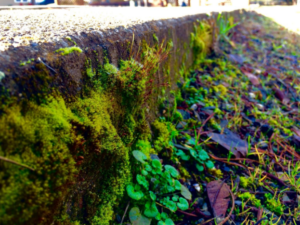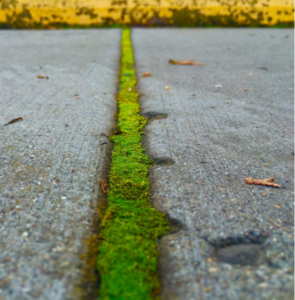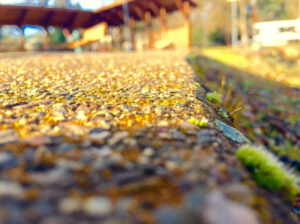
As a concrete enthusiast, I have always asked myself, “Why does moss grow on concrete?” Through web-based research, I have discovered more about the biological structure of moss and how it interacts with physical and chemical structure of concrete.

The Structure of Moss
As a non-vascular plant, the body of moss has no roots; rather, it uses tiny threads (rhizoids) to anchor itself to the stones, trees, or ground where it grows. These rhizoids allow the moss to firmly attach and grow on the surface, while absorbing water.

Why Concrete?
Most moss requires damp and sheltered areas to absorb water through the rhizoids to prevent the moss from drying out. Concrete is a porous material which allows the rhizoids to attach to the sheltered areas of the concrete.
In addition to the beneficial physical structure of concrete, different species of moss grow based on the acidity of the structure. For example, some species of moss thrive on base-rich carboniferous limestone while others thrive on more acidic rocks. Limestone is often used as an additive to cement which may explain why certain species of moss are attracted to concrete structures.
Why should you care ?
Moss and lichen growth on concrete creates the environment for slipping and tripping hazards.
Our next article will cover means and methods for creating a concrete that is resistant to moss and lichen growth.
